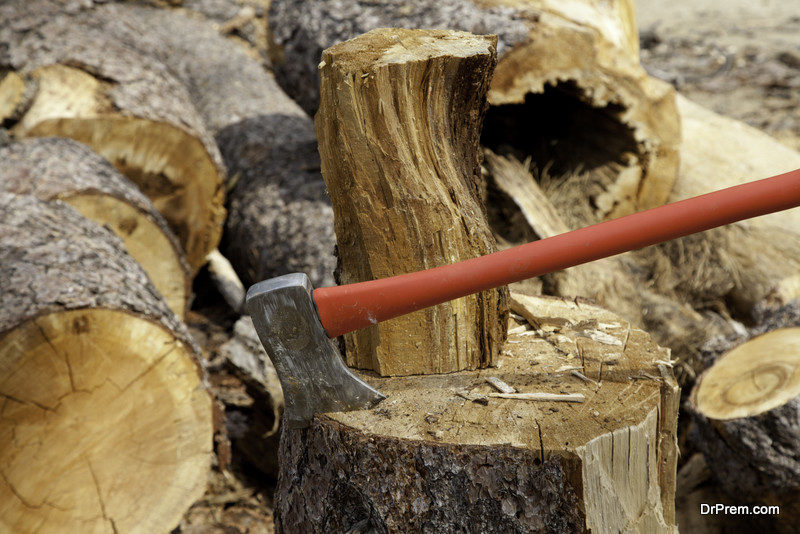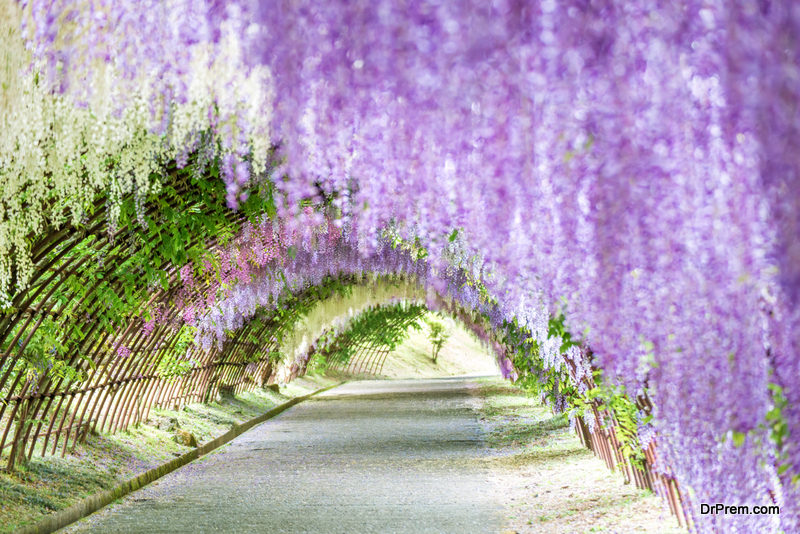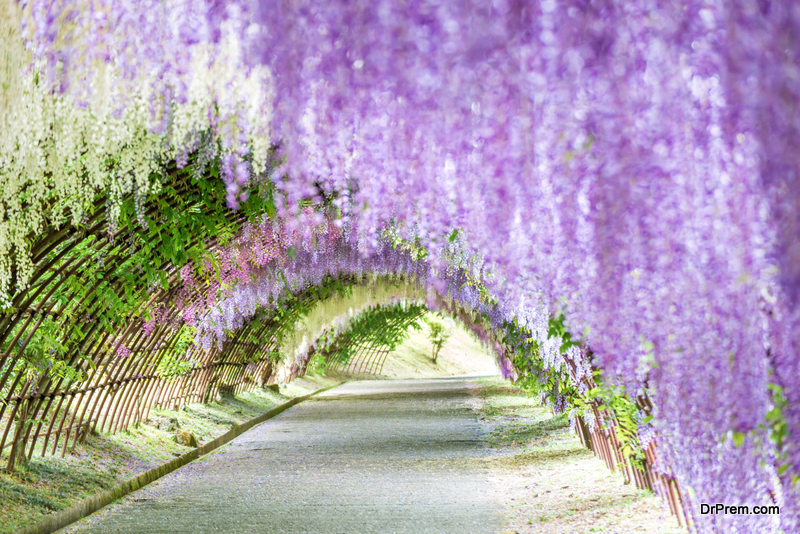Invasive species are a huge problem. Invasives could be unwanted herbs popping in fields, vines which strangle gardens and forests, trees which grow unnoticed and take up the space of useful plants. If your pet goldfish multiplies in your pond, eating up the resources of the native fish, then your goldfish is also one of the invasive species. However, in this article, we will focus mainly on plants’ invasive species facts, how to prevent them from becoming uncontrollable and also a few solutions to get rid of them.
Invasive species facts
Humans contribute to the spread of invasive plants
 Knowingly or unknowingly, humans are the main contributors to the spread of invasive species. This is one of the invasive species facts you can’t ignore. What it means, is that we have to check our behavior, such as taking care to plant the right plants in our gardens. Some invasive species are beautiful to look at, but grow at an alarming rate. It is our responsibility to tend these plants so that they do not end up becoming a nuisance.
Knowingly or unknowingly, humans are the main contributors to the spread of invasive species. This is one of the invasive species facts you can’t ignore. What it means, is that we have to check our behavior, such as taking care to plant the right plants in our gardens. Some invasive species are beautiful to look at, but grow at an alarming rate. It is our responsibility to tend these plants so that they do not end up becoming a nuisance.
Invasive species are hardy and strong
Another of the invasive species facts is that these species are vigorous and survive better than other plants. Most invasive species are planted due to their benefits, but the growers are unable to utilize the benefits, and ignore the values, such as fixing nitrogen in the soil. There can be ways to use these plants so that their inherent properties can become useful.
Aquarium pets create marine invasions
 Goldfishes and other aquarium pets are exotic species, which should not find their way into streams and lakes. The innocuous, adorable goldfish can become a menace in the wild as it can grow up to a length of 16 inches, with a weight of approx 4 pounds. They uproot vegetation, breed excessively, disturb the sediment, eat everything, and not only that, they release parasites and algae. As you can see, pet fishes can create chaos and disturb the ecosystem.
Goldfishes and other aquarium pets are exotic species, which should not find their way into streams and lakes. The innocuous, adorable goldfish can become a menace in the wild as it can grow up to a length of 16 inches, with a weight of approx 4 pounds. They uproot vegetation, breed excessively, disturb the sediment, eat everything, and not only that, they release parasites and algae. As you can see, pet fishes can create chaos and disturb the ecosystem.
If you are unable to care for pet goldfish or other aquarium fishes, then it is best to give it away to a trusted family member or friend or the child next door, but never release them to wild streams.
Ways to prevent the spread of invasive species
Using local firewood only
 The health of forests and waterways depend on the flora and fauna. This includes native insects which are beneficial in many ways. If you carry firewood with you, you may unwittingly spread dangerous species such as European gypsy moth, Asian Longhorned beetle, and Emerald ash borer, which can decimate forests. It’s best to be aware of one of the most important invasive species facts, that firewood can carry invasive species and so you should source/buy local firewood when you go camping.
The health of forests and waterways depend on the flora and fauna. This includes native insects which are beneficial in many ways. If you carry firewood with you, you may unwittingly spread dangerous species such as European gypsy moth, Asian Longhorned beetle, and Emerald ash borer, which can decimate forests. It’s best to be aware of one of the most important invasive species facts, that firewood can carry invasive species and so you should source/buy local firewood when you go camping.
Use native bait
Fishing is a favorite past-time of many people, as they relax in the great outdoors. However, fishing should be a responsible activity and you should take care to use local species if you want to use live bait. Many aquatic invasions occur due to people releasing live bait (which are not native to the area) into the rivers, streams or lakes. One of the ways to prevent invasions is to refrain from releasing bait into waterways before leaving.
Brush/bathe your pet

If your pet is traveling with you, then they might be the carriers for seeds through their fur and paws. Do check them, brush them or bathe them to wash off the seeds along with travel dust.
Wash camping and hiking gear
When you go hiking, trekking or camping, there is a good chance that you may bring back fast growing seeds, plants, spores and insects with you. These may stick to your shoes, boots, camping gear and backpack. Washing or brushing your backpack etc, will prevent the spread of invasive species. Doing this would mean that you are aware of invasive species facts, and are interested in preserving the local ecosystem.
Solutions to control invasive species
Volunteer at various removal efforts

Invasive species, such as the English Ivy, climb on every available space, on the sides of buildings, up the trunks of trees and covers the forests floors. You can be part of the solutions and volunteer at the local effort. You can solve the invasive vines in yard by taking some time out regularly and pluck them out.
Find out your area’s native plants
One of the solutions is to plant native plants after consulting your local nursery. This is a much better way of avoiding invasive species from taking over your yard and garden. Among the invasive species facts is that humans themselves create the problem by being unaware of the native species in the area.
Report invasive species
Once you educate yourself about invasive species, you can report them to the authorities i.e. your area’s Agriculture Department, who can then take the necessary steps.
Examples of invasive plants
Chinese wisteria (Wisteria sinensis)
 This vine is popular in home gardens, but where the climate is favorable, the species grows rapidly and this is now of the most common invasive vines in yard. If their seeds are carried to forests, they can displace the native species and might even end up killing large trees.
This vine is popular in home gardens, but where the climate is favorable, the species grows rapidly and this is now of the most common invasive vines in yard. If their seeds are carried to forests, they can displace the native species and might even end up killing large trees.
Bamboo (Phyllostachys spp.)
Bamboo’s slender form makes it a lovely screen, especially in urban spaces. However, it grows new shoots in very short time, causing a nightmare for homeowners trying to keep it under control. The fishpole bamboo’s roots can reach upto 20 feet more from where it was planted.
Autumn olive (Elaeagnus umbellata)
 This invasive species interferes with nutrient cycling and plant succession. It produces a massive quantity of seeds – 200,000 seeds every year, enabling it to spread easily in almost all kinds of habitats.
This invasive species interferes with nutrient cycling and plant succession. It produces a massive quantity of seeds – 200,000 seeds every year, enabling it to spread easily in almost all kinds of habitats.
Winter creeper (Creeping euonymus)
The winter creeper, which grows as dense mats, deprives other species of sunlight and space. It depletes nutrients from the soil and draws moisture from plants nearby, which makes it harder for native species to survive. This vine creeps everywhere and the seeds are spread by small mammals, water and birds. It is best not to plant it knowingly in your yard, as it can quickly invade your area.
Practicing a little care in the selection of species when buying them, as well as following the necessary preventions, can help to reduce the invasive species problem.



